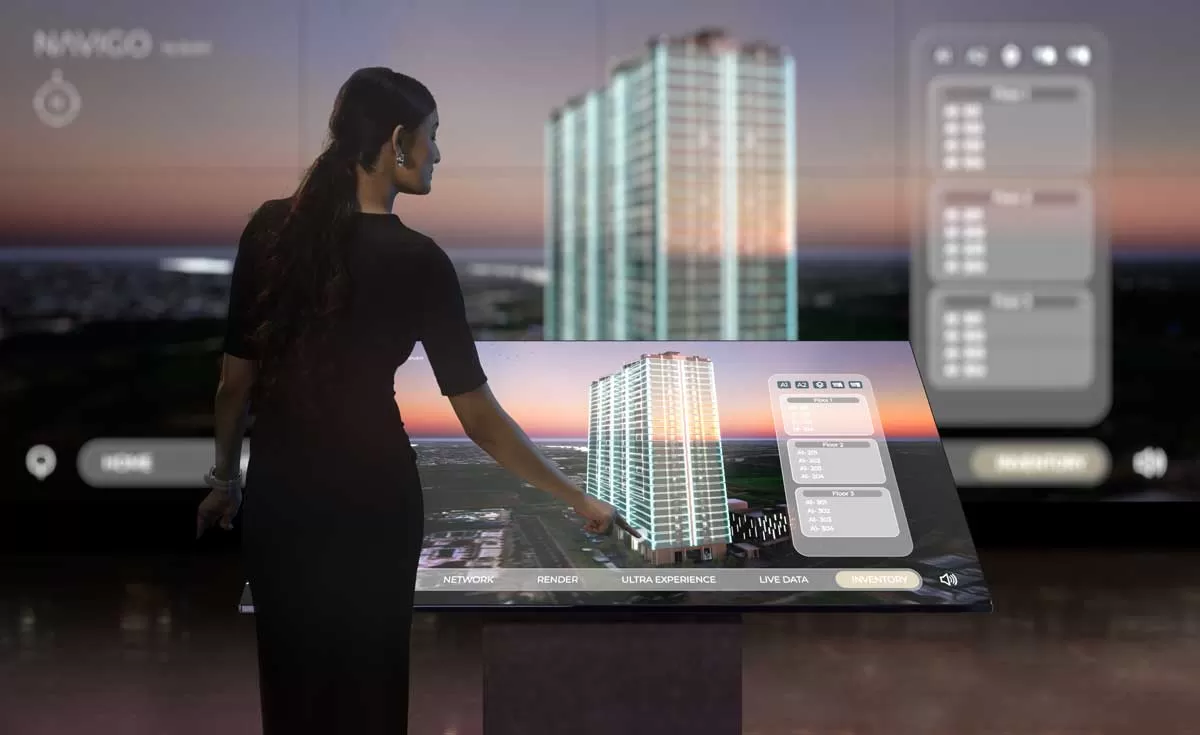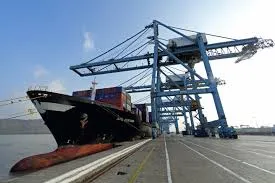With the real-estate sector contributing around 7.3 per cent to India’s GDP, many sales representatives still rely on printed brochures, often leaving customers to visualise properties on their own – a gap that highlights the growing need for more efficient and engaging property tours. Qubit’s next-gen 3-D visualisation and analytics tool Navigo meets this demand by offering hyper real customisations and personalised 3-D tours of apartments. Ajjay Parge, Founder, Qubit, shares more in conversation with R SRINIVASAN. Excerpts:
Please share the journey of Navigo since inception.
Navigo was conceived as a response to the growing need for immersive, real-time visualisation in the real-estate industry. We recognised early on that 3-D visualisation had a transformative potential for sales and customer experience. Leveraging our
30+ years of expertise in
3-D visualisation, we began development by integrating advanced rendering techniques with interactive, real-time capabilities. The goal was to create a tool that allows potential buyers to engage with properties in a lifelike manner, enabling them to explore spaces as if they were physically there. Today, Navigo has not only revolutionised real-estate sales but also set a new benchmark for visual experiences in the industry.
How does the core technology behind Navigo work and what makes it capable of providing ultra-photorealistic visualisations
in real-time?
Navigo combines high-fidelity 3-D modelling, real-time rendering engines and AI-driven optimisations to create ultra-photorealistic visualisations. The real magic lies in the way we manage data – ensuring that complex models, lighting and textures load and display seamlessly, even on Web-based platforms. My experience in 3-D visualisation over three decades provided us with a deep understanding of how to balance aesthetics and performance. The development process was intensive, involving close collaboration between our tech teams and real-estate experts, ensuring that the tool not only looks stunning but is practical and responsive for end-users.
Do you think the ability to visualise properties in real-time will change the way buyers approach the decision-making process? What patterns have you seen so far?
Absolutely. Real-time visualisation bridges the gap between imagination and reality for buyers. It allows them to immerse themselves in a space, assess every detail and personalise their choices, leading to more confident decisions. Buyers tend to engage for longer periods, often spending upwards of 30 minutes exploring properties. This deep level of engagement translates into faster decision-making and higher sales conversions. The ability to visualise in real time removes a lot of uncertainty and fosters a greater sense of ownership before a purchase is made.
With the RERA regulation pushing for greater transparency, will immersive tech solutions like
Navigo become a standard for property developers?
Yes, immersive tech solutions like Navigo are well-aligned with the RERA mandate for transparency. As buyers demand more information and clarity before making purchasing decisions, tools that offer complete, real-time insights into properties will become essential. Navigo not only enhances transparency by giving buyers a clear and detailed view of properties but also offers developers a way to communicate trust and commitment to quality. In an era where trust is paramount, immersive tech is becoming a standard and we expect more developers to adopt such solutions moving forward.
Navigo facilitated real-estate sales of Rs.5.1 billion in nine months of its introduction, with interactive presentations where the company sold 350,000 sq ft using it as the primary sales tool, with an average engagement time of 30 minutes per family. How much did you invest in this technology and how many projects has Navigo helped you sell?
We’ve invested heavily in Navigo, both financially and in terms of time and resources. Navigo is the culmination of years of R&D, technology partnerships and the expertise of our 3-D visualisation team. While the exact investment is proprietary, the returns have been exponential. It has already been instrumental in closing several key projects, including 350,000 sq ft of real estate, within a short time frame. Our clients see an immediate impact when deploying it as part of their sales strategy, with engagement times increasing and conversions happening faster.
Please elaborate upon how
Navigo has become the primary sales tool for two of the company’s high-end projects (in Kalyani Nagar and Sadashiv Peth) and the immediate impact on sales.
For the projects in Kalyani Nagar and Sadashiv Peth, Navigo became a gamechanger. By allowing potential buyers to interact with the properties in a lifelike manner – walking through the spaces, customising layouts and experiencing the ambience in real time – the buying process became much more dynamic and engaging. We saw sales grow by 16-18 per cent, largely because Navigo helped build an emotional connection with the property long before the customer visited the physical site. This immersive experience also builds trust, as customers feel they have a comprehensive understanding of the project before committing.
As the group has forayed into roads and bridges in the infrastructure domain, what is the group’s targeted market share between real estate and infrastructure?
While our core expertise remains in real-estate visualisation, we see tremendous opportunities in the infrastructure sector, especially as India pushes for modernised urban planning and smart cities. Our focus is on creating visualisation solutions that can also serve infrastructure projects by offering stakeholders, planners and the public a detailed view of upcoming projects. Our aim is to balance the two verticals, with real estate remaining a dominant focus but with infrastructure offering significant growth potential. We are positioning Qubit to have a larger share in both markets as the demand for high-quality visualisation grows.
How are you integrating
emerging technologies like AI,
ML, GIS, AR and VR into your platform to enhance the buyer experience further?
We are continuously innovating by integrating AI and machine learning to optimise our visualisations and improve the personalisation of buyer experiences. AI helps us streamline the creation of ultra-realistic environments, making the process faster and more efficient. AR and VR are key to our future road map; they will allow buyers to experience properties in an even more immersive way, whether remotely or onsite. We’re also looking at how GIS technology can enhance location-based visualisation, providing a broader context for real-estate purchases and
urban planning.
What new technological features can we expect to see in Navigo
in the coming years? How will
you stay ahead of the competition as 3D visualisation tools become more common?
In coming years, we’re focusing on deeper integration of AI, enhanced user interaction and expanding the scope of Navigo to include virtual walkthroughs that are indistinguishable from real life. We’re also looking at incorporating predictive analytics into the platform, which would offer insights into buyer preferences and market trends. Staying ahead of the competition will be about continually pushing the boundaries of realism, interactivity and user engagement. We’re committed to innovation and keeping our platform ahead of the curve.
Currently active in the Pune region, Qubit, with revenues of Rs.100 million, is planning to expand pan-India and into UAE markets. Please elaborate upon your expansion and other plans in view of the projected Rs.50 billion in sales for 2024-25.
Our expansion plans are aligned with the growing demand for immersive tech solutions in real estate. As we move pan-India and into the UAE, we’re focusing on key cities where luxury real-estate and large-scale developments are prominent. The `50 billion sales target is ambitious, but with the success we’ve seen in Pune and other parts of India, we’re confident of achieving it. We plan to invest further in our technology, grow our team and establish strong partnerships in these markets to scale quickly and effectively.





















